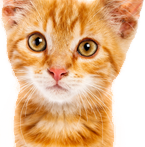The most obvious way to identify your horse is by horse ID using natural markings.
Using natural markings to identify your horse
Horse ID using natural markings is the simplest, least costly way to identify your animal. Obviously as you get to know your horse and build your relationship with him, you start to memorize his markings. This can be very helpful if you get in a situation where your horse gets intermingled with other horses that are similar in coloring.
Many horses are solid color, but most horses have some kind of feature that allows for horse ID using natural markings. For example, many horses have markings on their forehead. This type of marking is usually called a star. Horses also have markings on their snout. These markings are called snipes and often meld into the star portion of the horse's markings giving the horse very long lean markings.
Horse ID using natural markings can be utilized if your horse has blaze. Blaze is a very thick stripe that goes from your horse's nose all the way up its face. Some horses have even larger white markings that go about three-quarters of the way up the horse's head and cover its eyes. This marking is a called a bald marking.
You can also use horse ID using natural markings if your horse has some other unique coloring. Some horses have markings on their legs that make them look like they're wearing socks or boots. Other horses have markings on their sides, like a cow and others have some markings on their rear.
Unique characteristics
Horse ID using natural markings is much easier if you have a horse that has markings that are unique. While facial markings and blaze may look unique, you’d be surprised at how many horses have these markings. However, if your horse has one or two blue eyes, it truly is unique because most horses have brown eyes. Blue-eyed horses are considered to have glass eyes.
Is there anything else I can do?
Yes. While horse ID using natural markings is all fine and good, it doesn't protect you against theft. For example, if your horse with blaze gets stolen, the thief can claim that he or she has a horse with the same markings. Then it's his word versus your word. This is not always the best situation. To avoid this, you can brand your horse, tattoo your horse or put a microchip in your horse. All of these markings are permanent and truly unique, which takes the guess work out of horse identification. Horse ID using natural markings is great, but you should have a back up plan.




